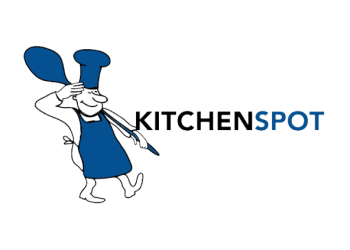A cutting board or chopping board is essential for any modern kitchen. While having one cutting board might seem enough, experts recommend having at least two boards, one for raw meat, poultry products and another board for fruits and vegetables.
For example, if you chop raw meat and then use the same cutting board to slice a piece of fruit, you run the risk of cross-contamination of bacteria from the raw meat into your fruit, not to mention the taste and smell of your fruit will be altered.
In the early days, cutting boards were made of wood since it was the most available material used by mankind to build various tools. Over time, more materials such as bamboo, rubber, glass, and plastic started being used to make cutting boards.
Plastic cutting boards have gained popularity over time. Their introduction was fuelled by the idea that they were easier to clean and handle. This concept remains up for discussion, and we’ll delve into it further in the article.
At our store, you’ll find boards made from a wide range of materials. However, seasoned kitchen professionals tend to go for plastic and wood. In this article, we’ll look at what makes wood and plastic the preferred choices for cutting boards, their downsides, and how to make the most of your cutting board.

Wood cutting boards
Advantages of using wood cutting boards
Wood cutting boards are hard enough to allow for smooth cuts, but not so hard that they can easily dull your knife’s edge. The wood texture is preferred by chefs as it gives a “good feel” when cutting things. They are quieter when they come into contact with a knife and have a strong grip on most countertops, preventing sliding when working.
For a smoother experience, pair your wooden chopping board with high-quality knives which can be found at KitchenSpot at prices you can afford.
Wooden cutting boards can last longer than plastic ones, you can get your stained wooden board sanded to reveal a relatively new board. Sadly, the same can not be done for plastic boards. Certain wood types have self-healing properties, and shallow cuts will close up over time. They can also resist moisture build-up better than other types of boards.
Last but not least, wooden boards are aesthetically pleasing and likely to complement the rest of your wooden kitchen furnishings.
Did you know? Sanitizing wooden cutting boards immediately after use will prevent bacteria build-up and staining. Visit Kitchen Spot for kitchen cleaning essentials.

Disadvantages of using wood cutting boards
Unfortunately, wooden cutting boards require instant cleaning and diligent care after use to avoid the growth of bacteria and prevent staining. And since they are prone to warping, wooden boards need to be hand washed and oiled frequently. This level of care and attention might be too much for some. They are generally heavier and thicker, hence take up more space and are cumbersome to move around.
Plastic cutting boards
Advantages of using plastic cutting boards
Plastic cutting boards are less costly to acquire than wooden boards, and they are easy to clean and maintain. They are also dishwasher-friendly, making them the right choice for people who have less time on their hands.
Due to the nature of the material, plastic boards are less likely to stain, hence the suitable choice for preparing raw meats, poultry or fish. They are typically thinner and lighter, making them easy to move around.

Disadvantages of using plastic cutting boards
One of the main downsides of using plastic cutting boards is that they need to be replaced more frequently, unlike wooden boards. Cuts and gouge marks show more easily than on wood and the damage can not be easily reversed through sanding as with wooden boards.
Still not sure what to choose?
Our consultants can give you recommendations according to your needs. If you’re in Arusha, visit our store located at TFA Complex West Wing, above Woolworths, or give us a call at +255 699 290953
When to get an upgrade
- When your board is badly stained or filled with deep cuts so much that scrubbing is not enough, then it’s time to get a replacement.
- When a cutting board has deep cuts or grooves hence increasing the chances of trapping moisture and allowing for the growth of bacteria.
- For hygiene and food safety, ensure your boards are replaced frequently, or in the case of wooden boards, sanded frequently to get rid of cuts.

What to look for when shopping for a cutting board
- Shape and Size depending on the size of your working, washing or storage space.
- The material of the board, hopefully, the above guide will help you decide what to buy based on your intended usage.
- Frequency and level of usage will also determine how durable your cutting board needs to be.
- Colour coding; most professional kitchens follow a colour coding system to differentiate cutting boards for various uses. e.g blue for raw seafood, green for vegetables and fruits, etc.
Tips to care for your cutting board
- Regardless of the type of your cutting board, regular care if necessary.
- Wash chopping boards, whether plastic or wood, gently with soap and hot water
- Thoroughly dry wooden boards with a clean dish and keep somewhere with enough air circulation to keep moisture out
- To prevent warping and splitting, frequently oil wooden boards with edible mineral oil
- Never use a dishwasher on wooden boards as heat could damage the board
- Don’t leave any water or food standing too long on wooden boards









